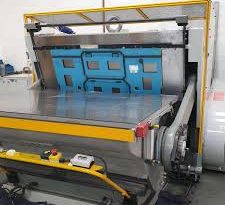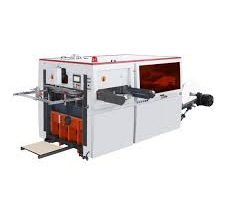Maximizing Efficiency with Die-Cutting Machines in Industrial Applications
Introduction: In an era where manufacturing speed and precision are paramount, die-cutting machines have become critical tools across various industries. These machines offer the capability to rapidly produce components with exact precision, streamlining the manufacturing process and reducing material waste. This article explores the essential role of die-cutting machines in enhancing manufacturing workflows, detailing their features, benefits, and applications.
What is a Die-Cutting Machine? A die-cutting machine is a specialized tool used in manufacturing to cut and shape materials into specific forms using a die—a metal-sharp template. These machines are capable of handling a range of materials, including paper, plastic, metal, and fabric, making them indispensable in settings that require high volume, detailed cutting operations.
Key Features of Die-Cutting Machines:
- High Precision: Die-cutting machines ensure components are cut to exact specifications, which is crucial for maintaining quality standards in production.
- Versatility: Capable of processing a variety of materials, these machines can quickly adapt to different production needs.
- High-Speed Operation: Designed for rapid production, die-cutting machines can operate at high speeds, significantly increasing output.
- Customization Capability: The ability to change dies quickly allows for flexible manufacturing processes, enabling the production of customized parts efficiently.
Benefits of Die-Cutting Machines:
- Enhanced Productivity: By automating cutting processes, these machines allow for faster production cycles, enabling manufacturers to meet tight deadlines.
- Consistent Quality: The precision of die-cutting minimizes errors and ensures consistent product quality across large batches.
- Reduced Waste: Precision cutting reduces material waste, which not only saves costs but also aligns with sustainable manufacturing practices.
- Cost Efficiency: Automating the cutting process reduces labor costs and increases throughput, leading to better resource utilization and profitability.
Applications Across Industries:
- Packaging: In the packaging industry, die-cutting machines are used to create custom boxes, inserts, and displays that require intricate shapes and designs.
- Automotive: Used for cutting gaskets, seals, and interior trim pieces that must fit precisely within vehicle assemblies.
- Electronics: Essential for producing accurately sized insulating layers, circuit boards, and other components critical to electronic devices.
- Textiles: Utilized for cutting fabrics in precise patterns for apparel and other textile goods.
Conclusion: Die-cutting machines are a cornerstone of modern manufacturing, offering enhanced efficiency, precision, and flexibility. The ability to quickly produce high-quality, uniform parts makes these machines invaluable in today’s fast-paced production environments. As technology continues to evolve, the capabilities of die-cutting machines expand, further enhancing their impact on industrial productivity and innovation.



